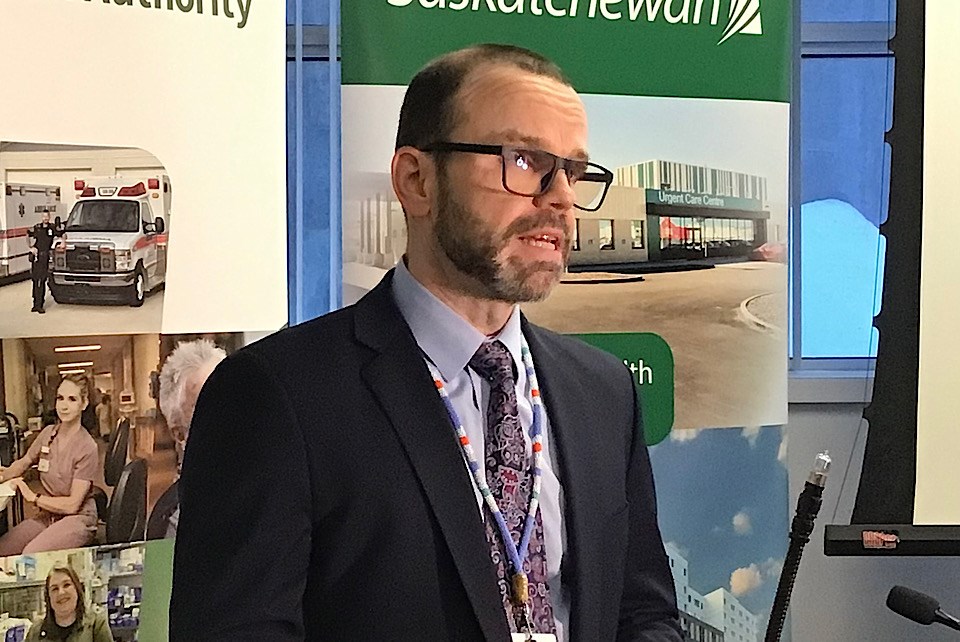REGINA - Reports are coming out of Saskatoon of more overcrowding at St. Paul’s Hospital.
In a news release the opposition NDP are saying that in the coming week, patients requiring emergency room care at St. Paul’s Hospital “may have to wait in the ambulatory care area due to severe overcrowding.”
Their news release pointed to St. Paul’s С����Ƶ at 200 per cent capacity or more numerous times since at least the beginning of October, with Royal University Hospital has been 300 per cent full or more several times in the same period.
“The same old Sask. Party excuses have done nothing to fix our hospitals,” said Health Critic Vicki Mowat in a statement. “After 17 years of the Sask. Party, doctors and nurses are leaving in droves. Over 4,000 frontline healthcare workers left the profession in Saskatchewan in 2023 alone. We need to listen to the hardworking professionals on the front lines and get our health system out of last place in Canada.”
These are just the latest capacity pressures at St. Paul's Hospital, which last year saw fire code violations due to overcapacity pressures in the hallways.
Saskatchewan Health Authority Chief Operating Officer Derek Miller was asked about the current situation at a news conference in Regina. He explained some of the reasons for the surge in patients, pointing to an increase in demand at this time of year.
“We have been experiencing... we're going into winter, or winter is here,” Miller said. “We have been experiencing increases in seasonal viruses. We've also seen the impact, you know, of snow and ice and so on, on our people accessing the emergency departments.”
He said that in St. Paul's Hospital they have limited capacity, and “occasionally we do use the ambulatory care space as a space to hold patients that are awaiting admission into the hospital.
“So this week, as we are experiencing these pressures, we have used that space to achieve space for about 12 to 14 patients that are awaiting admission. And so it's a short-term measure, but it's part of our overcapacity and surge plan to be able to make sure we can safely care for patients that are awaiting admission.”
He said they know it impacts the ambulatory care clinics that are provided out of that space, and they have been working with physicians and staff that are impacted by that.
Miller adds this is a “short-duration change, and next week, we'll be moving back into full service delivery of the ambulatory care services.”
When asked if there was any thought towards expanding the space at the hospital for a more permanent solution, Miller responded as part of the capacity pressure action plan announced last fall, one of the actions was to initiate a longer-term needs assessment and planning process.
“We provided an update earlier this year that we were going into more detailed planning that would look to see how can we better utilize the space that we have within our hospitals,” Miller said. “Maybe are there services that could be delivered in a community setting that would allow us to create more acute hospital space that would alleviate pressures that we're experiencing in the emergency departments. We are working, we're doing that work right now in collaboration with the Ministry of Health to assess what are the current and future needs of the population for acute services, what opportunities might we have more immediately within our hospitals to better utilize our space, and then also over long-term, how are we going to be able to meet the future needs of the population as the population grows in Saskatoon and also across the province. And Saskatoon is a referral centre for much of the province for many services, and so we need to position ourselves to meet that.”
He said they were actively working on more permanent solutions to alleviate the pressures with surges in demand in their emergency departments. As for how often this sort of thing happens, Miller said that typically, they do experience higher demands in the fall and going into the winter.
“We're probably around our peak of our influenza season, so this is the time of year where we do occasionally have to use that space and other spaces in the hospital in order to meet that. And so it's not unusual that we have to access other spaces in order to meet that demand, but obviously we're focused on delivering that quality and safe care to our patients.”
Health Minister Jeremy Cockrill was asked about what steps were С����Ƶ taken to find a more permanent solution. Cockrill responded they were in “very early phases” on master planning and on what the long-term plans and Saskatoon facilities look like.
Cockrill pointed to the “many investments” the government was making around the province in health care. He had pointed to the Urgent Care Centres that were either already open or under development.
“Saskatoon is one of our fastest growing communities in the province. And so certainly we know there's going to be need for more healthcare services there. And so we're in very early phases and, you know, hopefully I have more to say on that in the new year.”






